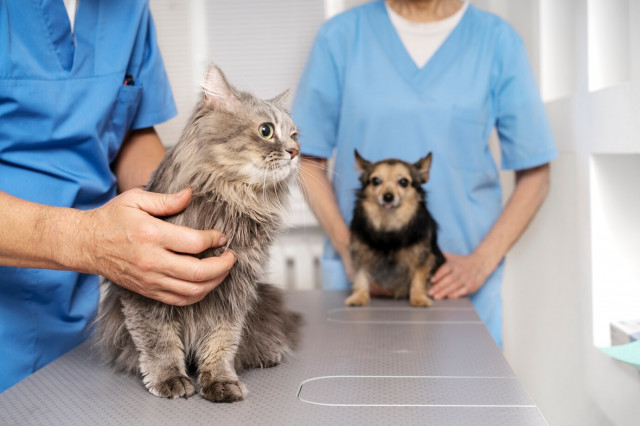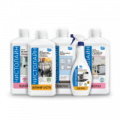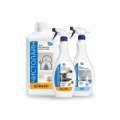Disinfection of premises for animals: how and by what means to carry out?

Content
Correct and timely disinfection of animal premises plays a very important role in preserving the health and life of livestock. It helps to prevent the spread of infectious diseases, avoid pestilence, danger to owners and consumers of final products. But it should be carried out exclusively with the use of specialized means that provide a high level of processing efficiency. Let's try to figure out how to choose such disinfectants in a little more detail.
The main goals of disinfection and its varieties
Disinfection treatment of livestock buildings can be aimed at:
- prevention of infectious diseases that can cause a reduction in livestock or infection of livestock products;
- elimination of already obvious pathogenic flora by its destruction or suppression of its activity;
- disinfection of surfaces, potential foci of the disease;
- general improvement of livestock;
- maintaining optimal sanitary and hygienic conditions for keeping animals;
- maintaining the high quality of goods sold.
The main task of disinfection of animal premises is to disinfect the territory to prevent infection of healthy individuals and employees.
Depending on the main purpose of disinfection, the treatment can be:
- Prophylactic. It is carried out to eliminate potentially dangerous pathogens. It is carried out before the commissioning of new livestock buildings. It must also be carried out shortly before the transfer of animals, before the start of the season, etc.
- Forced. Necessary in case of detection of sick individuals. Performed systematically, preferably on the first day of detection of the disease and in case of each re-detection of infected individuals.
- Final. It implies an extensive range of sanitary measures that are carried out after the elimination of a contagious disease immediately before the quarantine is lifted. It requires mandatory disinfection of all surfaces of the room, soil, transport, inventory, as well as the surrounding area and overalls of employees.
How is disinfection carried out?
For high-quality disinfection, it is necessary to adhere to a certain sequence of actions:
- First of all, mechanical cleaning is performed. It is aimed at eliminating various contaminants (food residues, bedding, waste products). It is important to remove contamination from different surfaces of the room, including feeders and other equipment.
- Next, you need to select the optimal disinfectant, calculate the scheme for preparing the working solution and the total amount of the drug that may be needed for processing.
- The final stage of treatment is the disinfection itself. It involves the application of the working solution on the surface. Usually the method of aerosol spraying or irrigation is used.
During disinfection treatment, the working solution is applied to the surfaces in a strict sequence. First, it is sprayed on partitions and the floor, then on the walls and various equipment. The final stage of treatment is the irrigation of the ceiling and floor surface in the aisles. Often, chemical disinfection is supplemented by thermal disinfection. It can also be combined with disinsection.
What products are suitable for treatment?
It is necessary to choose preparations for disinfection of livestock buildings very responsibly. Preference should be given to products from a trusted manufacturer, the quality of which is confirmed by the relevant certificates. The most effective means that have proven themselves in the disinfection of livestock buildings include:
- Vernedor. This agent is active against a variety of pathogens, including especially dangerous ones. It destroys mycobacterium tuberculosis, pathogens of bird and swine flu, copes with fungi, including mold fungi and microsporia pathogens, and also has sporicidal properties.
- Ganzine Combi. A drug based on a mixture of quaternary ammonium compounds. It has antimicrobial properties, copes with various types of gram-positive and gram-negative bacteria, destroys viruses and pathogenic fungi.
- Septamine. A powerful disinfectant with a combined composition. It has bactericidal, virucidal and fungicidal properties. It provides high quality treatment and helps to destroy pathogens of various diseases typical of the livestock industry.
Regardless of the specifics of the chosen remedy, it is very important to follow the instructions for its use. The manufacturer indicates all the subtleties of using disinfectants for veterinary medicine on the package or in the instructions for the drug. Depending on the concentration of the working solution, the spectrum of effectiveness of the agent may differ.






